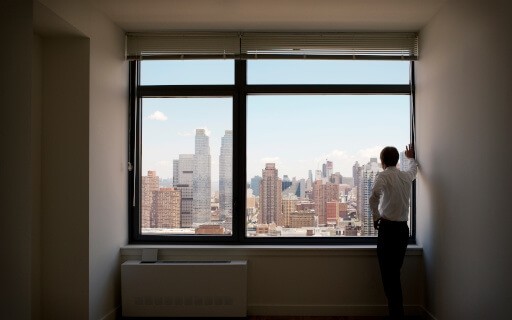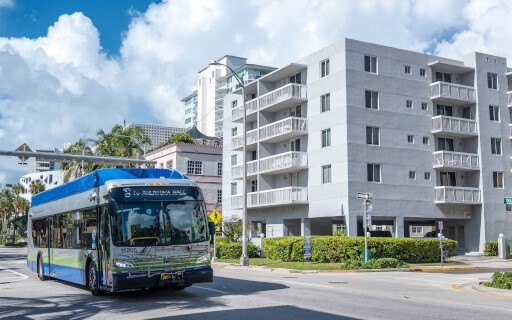Whether a tenant is starting their dream job across the country or you have a long-term tenant that is ready to purchase a home, your tenants will eventually move out of your rental property. Thankfully, with the help of your great advertisements, you have been able to find new potential tenants. But what happens after your former tenant moves out? Turning over your rental property is a part of being a landlord and knowing how to do it properly is very important.
Tenant turnover is the process of tending to maintenance issues and repairs, cleaning, and signing a new tenant. The goal of rental turnover is to restore the unit to its original condition (or better) so that a new tenant can move in. If you don’t properly turn over your rental property, you could face a small claims suit and risk losing a new tenant. As soon as your tenant gives a 60-day notice of non-renewal, the process of rental property turnover begins.
10 Steps to Take for a Rental Property Turnover
1. Advertise your rental property
Advertise the vacancy as soon as possible so you can have a new tenant in place that can move in once the current tenant moves out. The longer it takes to find a new tenant, the longer the unit will sit vacant, which means you won’t be making any rental income from your investment. You don’t know how long it will take to get a new tenant, so it’s best to be proactive.
2. Schedule vendors for repairs
Similarly, you should begin scheduling maintenance vendors as soon as you can, such as a professional cleaning company or a painting company. Booking vendors in advance will save you time because you won't be scrambling to find someone to clean the carpet when your tenant finally moves out. As soon as you receive notice from your tenant, set a move-out schedule. From there, you can set a time to begin repairs. If you’re a first-time landlord and not sure how to find a maintenance professional, check out our guide on how to find a trustworthy contractor.
It’s recommended to begin repairs as soon as the old tenant moves out and continue as needed until the new tenant moves in. Beginning repairs when the former tenant moves out will give you more time for cleaning, painting, and other upkeep. You’ll also be able to get the new tenant in faster because the service is already scheduled.
3. Complete a walk-through
Before you can let your new tenant move in, you must conduct a final walk-through inspection with the previous tenant. Use this time to assess the property for any damage that needs to be addressed outside of normal wear and tear so you can continue to schedule contractors if needed. As you walk through the unit, reference the notes, photos, and videos taken during the move-in inspection to help determine the damage, if any. The tenant does not have to be present during the final walk-through, but if you deduct the cost of repairs from their security deposit, you must justify why in a letter.
Similar to the move-in walk-through, take photos and videos of the condition of the unit and any damages. Document any invoices or receipts you receive for repairs to illustrate costs. If you’re sued in small claims court, you will have to prove why you deducted from their deposit, so always work to protect yourself. To ensure every room is inspected properly, make sure to use a rental walk-through checklist.
4. Complete necessary repairs and maintenance items
Although every rental will have a different amount of normal wear and tear or damage, there are a variety of maintenance tasks you should complete to ensure your property is rental ready and up to par with any state or local requirements. This includes checking that the electrical, plumbing, appliances, HVAC, etc. are in working order and making any necessary repairs. To learn more about the ins and outs of maintenance and repairs, check out our landlord’s guide to property maintenance.
Here is an example checklist for maintenance tasks and repairs to help you during the process:
- Fix anything that was listed as broken or damaged on the move-out checklist
- Renovate any outdated features (cabinets, countertops, toilets, flooring, shower tiles, light fixtures, etc.)
- Inspect the HVAC
- Change air filters
- Check for leaky drains and pipes and other water damage
- Check drains for clogs
- Inspect water pressure
- Get plumbing inspected by a professional
- Check if all appliances are working (refrigerator, stove, oven, microwave, washer, dryer, etc.)
- Fix or replace appliances, if necessary (you might be able to donate, sell, or recycle appliances depending on your local laws)
- Replace windows and window screens, if needed
- Tighten or loosen hardware (doorknobs, towel bars, handles on cabinets, etc.)
- Replace batteries in smoke and carbon monoxide detectors
- Replace lightbulbs
- Wipe walls before painting (always do this to remove any cobwebs, stains, dirt, and debris, which can prevent paint from sticking)
- Paint walls
- Clean carpet
You might be tempted to begin cleaning up during repairs, but it's best to wait until everything is completed since it's likely a mess will be made.
5. Consider any upgrades
Now is a great time to complete any improvements or renovations as well. It is possible to renovate when a tenant is living in a unit, but it’s much easier to get everything done when the property is vacant. You also don’t want your tenant to be bothered by constant construction. Some renovations and property improvements can increase the value of your investment, so you may be able to increase the amount of rent charged as well. Keep in mind that certain projects like updated cabinetry and new light fixtures may also attract a wider pool of potential tenants. Improving your rental property doesn’t have to be expensive either. Adding a fresh coat of paint or pressure washing the exterior of the property are two examples of budget-friendly upgrades.
6. Clean, clean, clean
No one wants to move into a dirty apartment or house. A deep clean can freshen up a space and it's also a safety precaution for your next tenant. Cleaning an entire property can get overwhelming, but you can always hire a professional cleaning company if you’re willing to spend some extra money. If you decide to clean yourself, focus on doing smaller tasks first and clean room by room.
Clean the floors last to ensure they’re spic and span before heading to the next room to clean. If you discover the rental property is excessively dirty, depending on state laws, you can also deduct costs from the security deposit if you include a cleaning clause in your lease. Remember to document everything.
If the carpet needs to be cleaned, depending on its condition, it might just need a vacuum or shampoo. However, it is usually necessary to get a deep clean or completely replace the carpet between tenancies. Carpet cleaning is highly recommended if you own a pet-friendly rental property because it will help with pest control, dander, fur, and odors. Although you can save money by removing or shampooing the carpet yourself, hiring a professional might be worth it. You don’t want potential renters turned away because of unusual scents or poorly installed flooring. Whether you go DIY or hire a professional, keep in mind that it can take carpet anywhere between two to 24 hours for it to dry, depending on the type of carpet, humidity, and airflow. Plan accordingly.
7. Address curb appeal
Now that you’ve completed repairs, maintenance, and renovations, seal the deal by focusing on curb appeal. The exterior of your property will impact potential renters’ first impressions and you want to make certain it’s a good one. Enhancing your curb appeal can be as simple as adding some well-placed furniture on a patio or front-facing deck. Here’s our guide on improving rental property curb appeal to help get you inspired.
8. Change the locks
You should always rekey locks once a tenant moves out. You can’t guarantee a former tenant didn’t make a copy of the keys, so create new ones. Rekeying protects your tenant from any unwarranted access to the unit. Conveniently, there are a variety of systems that allow you to easily rekey locks and create new keys. These rekeying systems are available at various price points as well. Tip: always keep a set of keys for yourself in case of emergency repairs, routine inspections, or if your tenant gets locked out or loses their key.
9. Get forwarding address from the previous tenant
Before your current tenant moves out, make sure to get their new mailing address so you can follow up with any final lease issues, like if they left behind a package, mail, or other personal items in the property. You can remove items to clean and make repairs, but you can’t always just throw them away. In many states, you’re required by law to contact former tenants about personal property they left behind. Landlords are also required to hold the tenant’s belongings in a safe place for at least 30 days. Check your local laws before taking any action. Before removing the items, take photos and videos as part of your documentation. You should also get a witness to watch you remove and store the items. To prevent tenants from leaving personal property behind, you can include a removal fee clause in your lease.
10. Schedule showings and begin touring the unit
Congratulations, your rental is now ready for a new tenant! Potential tenants will want to view the unit before moving in, so you’ll have to schedule tours. Although in-person tours are common, you can also create a video tour or a virtual tour, which can be a great alternative if a potential tenant is unable to come to the property. It’s possible to show a unit that is occupied, but it’s easier to wait until the unit is empty. Showing the rental when it’s still tenanted means you will have to coordinate with your tenant and provide notice based on your local laws, but on the plus side, you may be able to fill your unit quicker if you don’t wait for it to be vacant to show it. On the other hand, an unoccupied unit means more time for maintenance and repairs between tenancies, but you will lose rental income the longer the unit sits vacant.
Rental Property Turnover Checklist
Using a checklist is a great way to stay on track and ensure everything is completed while turning over a rental property. You can create and print your own checklist and cross off items as you complete tasks, but here’s a template to help you get started:
|
Task |
Completed? |
|
|
|
|
|
|
|
|
|
|
|
|
|
|
|
|
|
|
|
|
|
|
|
|
|
|
|
|
|
|
|
Check, fix, and/or replace appliances:
|
|
|
|
|
Tighten or loosen hardware
|
|
|
|
|
|
|
|
|
|
|
|
|
Bathroom
Kitchen
Entire Apartment/Rental Property
|
|
|
Change Locks and Make New Keys |
|
|
Complete Procedures for Tenant Retention (fill in blanks)
|
|
How Apartments.com Can Help During the Property Turnover Process
Apartments.com property management tools not only help during the property turnover process, but they can help you handle other common administrative tasks. When you list your rental property on Apartments.com, your property will be placed on five of the most popular websites in the Apartments.com Network, so your property will be exposed to millions of renters. Apartments.com also allows you to accept rental applications and screen tenants, so finding qualified tenants has never been easier. Once your new tenant moves in, you can manage maintenance requests online. You can also create online leases, collect rent payments, manage resident documents, and track expenses when using Apartments.com to manage your property.
Similar to many tasks as a landlord, turning over a rental property can be stressful, but it’s necessary in order to have a successful rental business. Although renters moving out is inevitable, one of the best ways to avoid preparing a unit for rent is to reduce tenant turnover. If your tenant renews their lease, you won't have to worry about finding new tenants or conducting repairs. Routine maintenance, welcome packages, requiring quiet hours, and allowing pets are just a few ways you can increase tenant retention. Keep in mind that the overall goal of preparing your rental property for a new tenant is to restore the unit. This helps potential renters envision themselves in their new home and helps you avoid any long-term vacancies.











